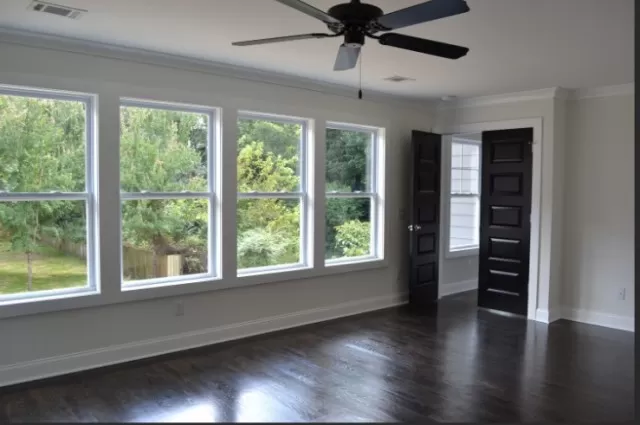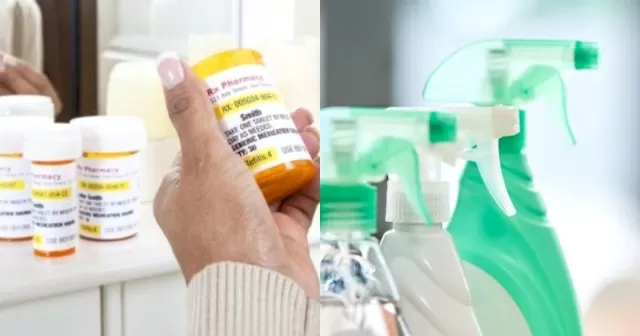Home Safety Audit: Key Areas to Verify This Month. Within the confines of your abode lies the sanctuary where solace intertwines with security—a haven designed to shield you from the world’s chaos. Regrettably, the tranquility we seek within our dwellings is sometimes marred by the specter of unintentional injuries, with nearly half of such incidents occurring within these familiar walls. This sobering truth resonates even more profoundly within households graced by the presence of children or seniors, underscoring the urgency of our responsibility.
Safety Measures for Bathtubs: Mitigating Risks of Falls and Drowning

The bathtub, a seemingly innocent household fixture, harbors potential hazards that demand our attention: the risks of both falls and drowning.
It is of paramount importance that we remain vigilant in safeguarding our loved ones, particularly the youngest members of our families. The rule is clear: a child below the age of six should never be left unattended in the bathtub.
However, this is just the beginning of our responsibility.
To create a secure bathing environment, proactive steps are necessary.
To avert the possibility of falls, consider implementing a two-fold approach. Start by positioning a nonslip bathmat adjacent to the tub, offering an extra layer of stability as one enters and exits the bathing space.
In addition, take the crucial step of affixing nonslip mats or stickers to the bottom of the tub itself. This dual strategy not only provides immediate security but also instills a sense of confidence for all users, ensuring that slips and falls are minimized.
When it comes to ensuring the safety of our loved ones, there is no room for compromise.
By adhering to these precautionary measures, we can transform the bathtub into a sanctuary of relaxation, knowing that we have taken every conceivable step to mitigate the risks of falls and drowning.
Secure Medications: Prioritizing Child Safety Over Convenience
The medicine chest, a household staple for storing essential healthcare items, offers convenience within arm’s reach.
However, in households with children, convenience must take a back seat to safety. Ensuring the well-being of our little ones becomes paramount, necessitating a more vigilant approach when it comes to the storage of medications, both prescription and over-the-counter.
While the medicine cabinet may seem like an easily accessible storage solution, it can inadvertently expose children to potential risks.
Children’s innate curiosity, coupled with their tendency to explore, could lead them to inadvertently discover and ingest medications that are meant for adults. To preemptively address this concern, it is recommended that medications be kept in a secure, locked cabinet or drawer.
This extra layer of protection acts as a barrier, preventing unauthorized access and reducing the likelihood of accidental ingestion.
In the pursuit of creating a safe home environment, certain sacrifices in convenience are necessary.
Opting for a locked storage solution for medications might entail an extra step, but it is one that significantly contributes to the overall safety and well-being of the household, especially its youngest members. By prioritizing child safety and making thoughtful choices, we transform our living spaces into sanctuaries of health and security.
Navigating Kitchen Hazards: Mitigating Fires and Burns Associated with Stoves and Ovens

Within the realm of household risks, the kitchen emerges as a potential hotspot for dual hazards, prominently featuring the threats of fires and burns.
The culinary haven, while a place of creativity and nourishment, demands a heightened level of caution to maintain the safety and well-being of all occupants. Safeguarding against these potential dangers requires a combination of vigilance, informed choices, and modern technological solutions.
Amid the hustle and bustle of meal preparation, it is crucial to exercise diligence and presence of mind.
Leaving the kitchen unattended while a stove or oven is in operation can lead to disastrous consequences. A momentary distraction could potentially escalate into a fire hazard.
As such, it is advisable to remain within the vicinity of the cooking area and refrain from leaving the house altogether when something is actively cooking. Furthermore, when the oven or burners are engaged, a watchful eye on children is imperative, as their curiosity might expose them to the risk of burns.
As the heart of culinary activities, the stove and oven warrant careful consideration when it comes to appliance upgrades.
When the time comes to replace an outdated range, opting for a model equipped with an integrated hot surface indicator light proves to be a prudent choice. This innovative feature provides an extra layer of awareness by promptly alerting users when the stove’s surface is still hot post-cooking, reducing the likelihood of accidental burns.
In the realm of kitchen safety, a proactive approach is key.
By adhering to these precautions and making informed decisions about appliance upgrades, we can transform our kitchens into spaces where culinary creativity and safety coexist harmoniously.
Safeguarding Your Staircase: Preventing Accidents and Ensuring Safety
Staircases, while an essential architectural feature, come with an inherent risk of accidents, ranging from painful tumbles to more severe outcomes like broken bones or even fatal injuries.
Recognizing the potential dangers posed by staircases underscores the need for proactive measures to maintain the safety of everyone within the household. Prioritizing safety demands attention to detail and a commitment to regular maintenance.
A clutter-free staircase is a fundamental step in mitigating the risk of accidents.
Keeping the stairway clear of any obstructions or debris prevents tripping hazards that could result in a dangerous fall. Additionally, the secure placement of carpeting or runners on the steps is of paramount importance.
Ensuring that these are properly tacked down guarantees that they do not become loose, eliminating a potential cause of trips or slips.
One must not overlook the structural components of the staircase.
Banisters and balusters play a critical role in providing stability and support, especially when ascending or descending the stairs. Any signs of damage should be addressed immediately.
Timely repair or replacement of damaged banisters or balusters contributes to the overall structural integrity of the staircase, reducing the risk of accidents caused by a lack of support.
Ultimately, the staircase should be regarded as more than just a functional passage between levels; it is a potential hazard that warrants diligent attention.
By maintaining an unobstructed path, securing carpeting, and promptly repairing any structural issues, we transform the staircase into a safe thoroughfare, ensuring the well-being of everyone who traverses it.
Enhancing Window Safety: Mitigating Risks for Children\’s Well-being

Windows, providing a connection to the outside world and a source of natural light, also present a potential hazard, especially for young children.
Even in single-story homes, the consequences of a fall from a window can lead to serious injuries. To ensure the safety and well-being of our little ones, it is imperative to take proactive measures to prevent accidental falls and keep curious minds away from potential danger.
Securing windows serves as the cornerstone of window safety.
Locking windows when not in use creates a barrier that deters children from opening them and inadvertently putting themselves at risk. In cases where windows are designed to be opened, such as for ventilation purposes, the installation of childproof window jams and wedges adds an additional layer of protection.
These mechanisms prevent children from independently accessing windows and attempting to open them, safeguarding them from potential falls.
The inquisitiveness of children knows no bounds, making it our responsibility to preemptively address potential hazards.
Childproofing windows should be a standard practice in every household with young children. By incorporating these safety measures, we create an environment where windows can continue to serve their purpose while ensuring the security and well-being of the youngest members of our family.
*The information is for reference only.